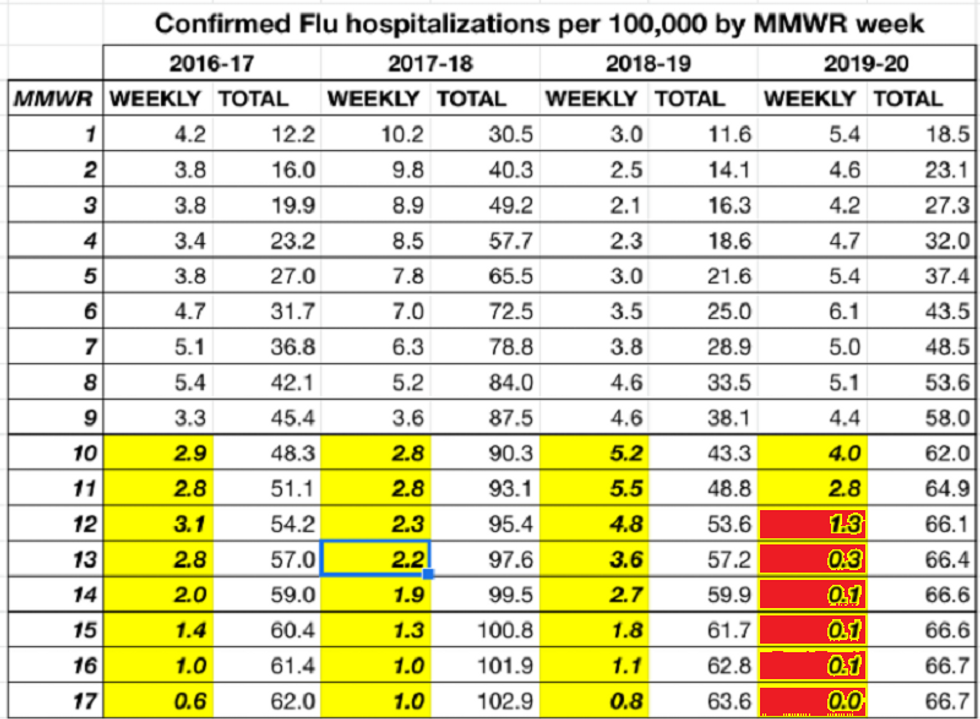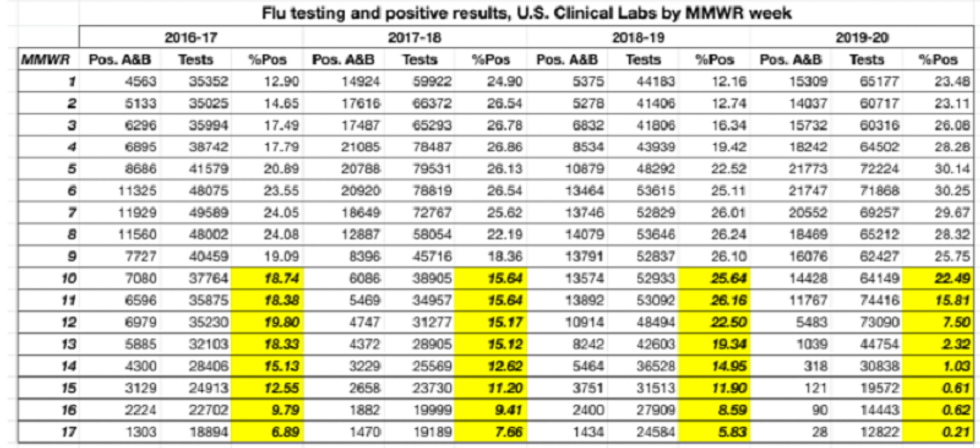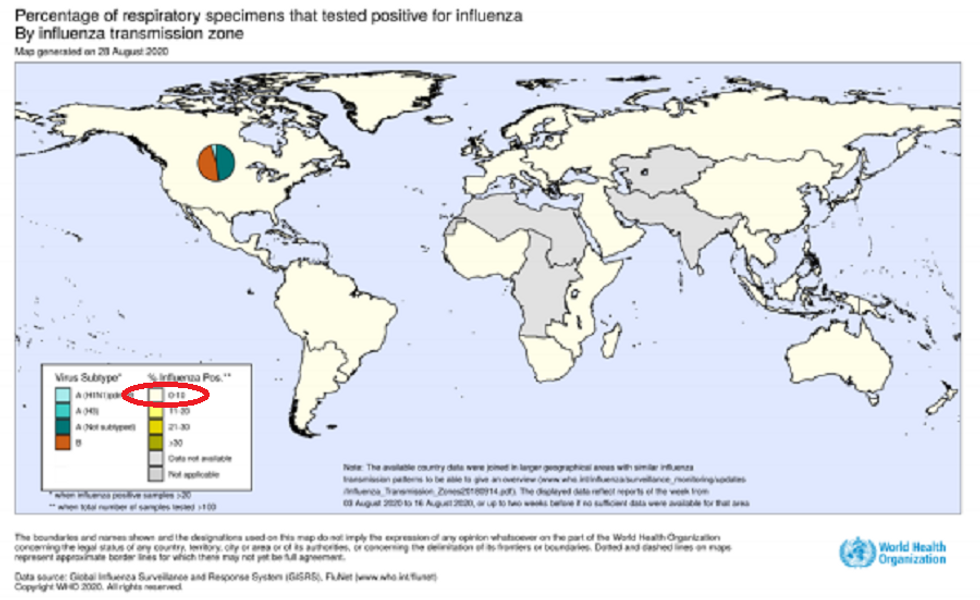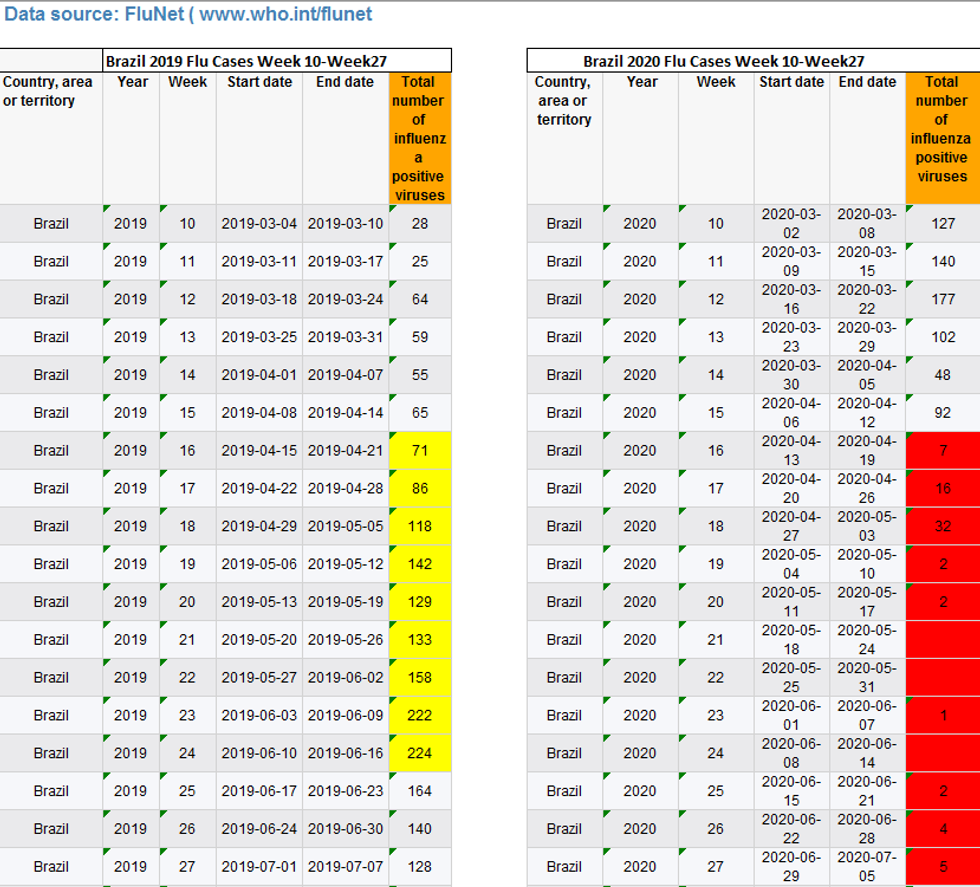
Juan Carlos Lucas/NurPhoto/Getty Images

The data shows that the coronavirus shuts the flu out
"Twindemic."
It's the new literary expression of panic being propagated by politicians and public health officials as pretext for continuing the social control measures indefinitely. If you search for the term "twindemic," you will find all sorts of ominous predictions of a "perfect storm" of a raging coronavirus pandemic converging with a harsh flu season to overrun the hospitals and pile up the bodies in the morgues. There's just one problem: We've already had COVID-19 for at least nine months, and we've seen that this virus and the seasonal flu do not proliferate together.
My friend Kyle Lamb, the ultimate COVID-19 math and data guru, has been messaging me for months about the strange phenomenon of the disappearance of the flu in the Southern Hemisphere. The issue didn't grab my interest at first because the public health elites hadn't begun to sow panic about the coming flu season in our hemisphere yet. Then, on Sept. 18, the CDC published a paper acknowledging that the flu had essentially disappeared from the Southern Hemisphere this past summer. That is an astoundingly positive fact that almost everyone in the world is unaware of amid the endless barrage of doom and gloom in the news.
The World Health Organization has observed that overall "influenza activity remained record low in comparison with previous seasons." The WHO discovered an almost miraculous cure for the flu! "Despite continued or even increased testing for influenza in some countries in the southern hemisphere, very few influenza detections were reported," wrote the WHO in an Aug. 31 report on influenza surveillance data.
The numbers are truly remarkable. In Australia, for example, there were just 107 lab-confirmed cases of influenza this past August, as opposed to 61,000 in August 2019. The same dynamic was observed in countries like South Africa, Chile, and Argentina – all countries that get their flu season during the North American summer.
A recent study by Australian researchers found "98.0% and 99.4% reductions in RSV [respiratory syncytial virus] and influenza detections respectively in Western Australian children through winter 2020; despite reopening of schools."
Those numbers are simply astounding and hint to some strong immunobiological phenomenon more than any human intervention as the culprit. It seems clear that when there is a dominant respiratory virus in circulation, it predominates over the flu and possibly other respiratory viruses. To test this theory, I asked Kyle to dig into data from the U.S. in the late winter. I recalled numerous articles early on in this past flu season warning of a moderate to severe season, but then it seemed to die off in February, and we wound up with just 22,000 reported flu deaths, the lowest in a decade. Could it be that we had already experienced the disappearance of the flu once COVID-19 began circulating more widely in early March?
The answer is a resounding yes!
After compiling the CDC's data on weekly influenza hospitalizations per 100,000 for the three prior flu seasons, Kyle contrasted those numbers to the weekly trend line in the 2019-2020 season. The numbers are astonishing:

As you can see, every year, the flu season begins to wane around week 10 (ending March 7, this past year) until it is essentially over around week 17 – at the end of April. But if you look at the 2019-2020 flu hospitalization data, you will notice that the flu didn't just wane in March, it died precipitously. By week 13 (ending in early April), the hospitalization rate was much lower than during any year on week 17, when it's normally the lowest and people are thinking a lot more of spring allergies than the flu!
Thus, we have already experienced this phenomenon of coronavirus cancelling out the flu in the Northern Hemisphere, but few have noticed it.
You might suggest that the lower numbers of confirmed hospitalizations were only evident because we were so focused on coronavirus at that point and weren't testing for the flu, even though it might still have been circulating, but not captured in the data. Kyle has the data on that as well:

As you can see, we actually increased flu testing well over the numbers of any previous year. This was likely due to the fact that in February and March, there were limited numbers of COVID-19 tests available and hospitals were actually liberally testing for the flu as a means of ruling out other pathogens and better diagnosing COVID-19. Yet despite the increased tests, the rate of positivity for the flu plummeted to near zero. In April, the positivity rate for flu tests hovered between 1/20 and 1/40 of the rate from the past three years!
Let's come full-circle back to the present. We stand today at the precipice of the new flu season – 2020-2021. Based on CDC data for week 40 of this year, we are already seeing the miraculous decline in the flu:
Thus, it is now an undeniable fact that COVID-19 essentially has not only reduced the prevalence of influenza, but it has nearly boxed it out of existence in both hemispheres. The big question is why. The CDC and WHO reports on the disappearance of the flu are extolling the virtues of "mitigation efforts," such as mask-wearing, social distancing, and better hygiene as the key to defeating the flu.
The CDC believes the decline in the flu is due to "widespread adoption of community mitigation measures to reduce transmission of SARS-CoV-2." Likewise, the WHO suggests, "The various hygiene and physical distancing measures implemented by Member States to reduce SARS-CoV-2 virus transmission have likely played a role in reducing influenza virus transmission."
Let's just indulge this point for a moment as if it were true. That would be an admission that these efforts have failed to block COVID-19 but somehow stopped the flu from circulating. It's a truly bizarre assertion.
Fortunately, you don't have to engage in mental gyrations to figure out why these measures would work for one respiratory virus and not the other, because several simple facts demonstrate that natural predominance of COVID-19, not human intervention, is what stopped the flu from circulating widely during the pandemic.
The reality is that lockdowns didn't begin until the end of March, and the universal mask-wearing was implemented several weeks to several months later, depending on the region. Plus, it takes a few weeks for these measures to register, assuming they work. Only the natural immunobiological phenomenon of one circulating virus pushing aside another would explain why the flu died in early March.
Moreover, the flu disappeared from nearly every country, not just the ones that exercised these attempted mitigation efforts. In typical years, the positivity rate of flu testing reaches well over 10% in most countries, yet the WHO reported that not a single country had more than a 2%-3% positivity rate this year.

Ironically, one of the only countries that did have a flu outbreak at the tail end of the summer this year was Cambodia, but as Kyle points out, the country barely had COVID-19 cases.
In Brazil, which notoriously eschewed lockdowns at the national level, a policy that President Jair Bolsonaro has been roundly criticized for, there was the same abrupt end to the flu season. A search of the WHO's influenza surveillance country database shows that Southern Hemisphere countries usually see an increase in flu cases in weeks 10-12 and then a continuous climb through July. In Brazil, as in all other countries (regardless of mitigation policies), the numbers dropped off and went backward in April relative to last year's numbers, which accelerated for several months thereafter.

Remember, unlike in the U.S., where COVID-19 began to predominated in early March (which is when our flu season was short-circuited), in Brazil the virus didn't really begin until April, which is why their short-circuit of the flu began a month later.
The two viruses seem to work against each other remarkably like a seesaw. Just as we see that our flu season in the Northern Hemisphere was normal before it was abruptly cut short by COVID-19, the same dynamic played out in the Southern Hemisphere. The virus that circulated strongly in America in March didn't begin to predominate in South America until April. Thus, flu season had time to get off the ground and went up through week 13-15. It died abruptly in April, as compared to previous years when it surged in a straight line through August, like all countries in the Southern Hemisphere.
The concept of one respiratory virus boxing out another is not new. A recent study published by immunobiologists at the Yale University School of Medicine found that the H1N1 epidemic in 2009 was cut short in the fall in several European countries by the seasonal rhinovirus spread. "These findings show that one respiratory virus can block infection with another through stimulation of antiviral defences in the airway mucosa, supporting the idea that interference from rhinovirus disrupted the 2009 IAV pandemic in Europe," asserted the four researchers. "These results indicate that viral interference can potentially affect the course of an epidemic, and this possibility should be considered when designing interventions for seasonal influenza epidemics and the ongoing COVID-19 pandemic."
Indeed, it is something that the propagators of panic and control refuse to consider. The implications of this data analysis are huge. It's not just that it shows it's nearly impossible to have a bad flu (or much of a flu season at all) circulating together with COVID-19, contrary to what governors in both parties are warning. It demonstrates that much of the loss of life from COVID-19 is really being taken from from flu seasons and will likely result in a very weak flu season this year, if not for the coming few years.
What this means is that over a 3- to 5-year window, unlike during the Spanish Flu, the excess deaths from this virus will be truly unremarkable outside of a few hot spots. It also demonstrates how mechanically cyclical respiratory virus deaths tend to be, regardless of human intervention measures. We are clearly not in control of natural biological phenomena, and it's time for politicians to stop using fear to make themselves all-powerful. Then again, these are people who think that we can "mitigate" temperature spikes and hurricanes.
Daniel Horowitz
Blaze Podcast Host